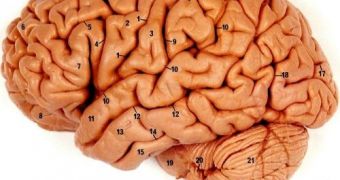Researchers have just recently discovered that suppressing fear may no longer remain simply a question of training. They have uncovered that the portion of the brain associated with primal fear is not the amygdala, as some have been claiming for a few years, and that inhibiting another tiny region of the cortex can completely eliminate this emotion from the brain. It's still unclear whether the discovery may have applications on humans, but further research will undoubtedly shed light on that as well.
According to University of Southern California investigator Larry Swanson, who has led the team of neuroscientists responsible for the current mice and rats tests, an unexpected area of the primeval brain is responsible for primal fear reactions in the rodents, when faced with a rival defending its territory, or with a predator such as a cat.
When the small animals had to confront their natural predators, a portion of the hypothalamus known as the dorsal premammillary nucleus was activated, and the rodents ran for their lives. But when team members operated on mice and made tiny lesions in those areas, the animals behaved a lot differently than they had done before. Their sense of fear towards cats seemed to have vanished, and it was a site to behold, the little mouse standing up against the cat without a flicker.
“These animals are not afraid of a predator. It's almost like they go up and shake hands with a predator. It's amazing that these lesions appear to abolish innate fear responses. The same basic circuitry is found in primates and people that we find in rats and mice. This is a new perspective on what part of the brain controls fear,” Swanson explains, adding that this is not the first time when mice's fears of cats is diminished, or even completely removed. But the new research is certainly bound to change the way in which researchers look at fear studies, as, for the past 30 years, the amygdala has been the main target.
The new paper, which will be published in this week's edition of the journal Proceedings of the National Academy of Sciences, is likely to open up new avenues of research in both rodents and primates, with the distinct possibility that the trials be extended on humans, as soon as a relatively harmless procedure is set in place. The military will most likely be very interested in this find.

 14 DAY TRIAL //
14 DAY TRIAL //